English Learners Experience Medieval Crieff
Helping You Learn English
As usual, this blog is written for English learners – both as an English lesson (see the question task) and to introduce you to the people you will meet on our English language holidays.
We want to give you a taste of the places we visit, the activities we offer, and the local food and drink we celebrate. It’s all included when you take an English immersion holiday at our Scottish Language School!
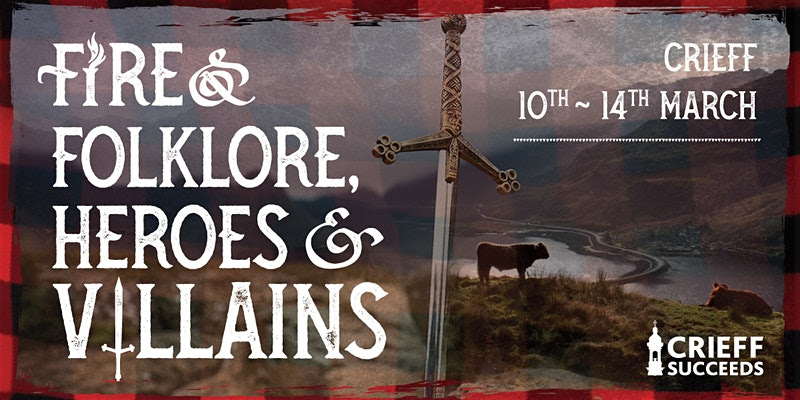
Flyer, Fire, Folklore, Heroes and Villians performance in Crieff town centre.
The Whole of Crieff is a Stage
The Fire, Folklore, Heroes and Villains event took place over 4 days, across several different sites within the town centre, literally projecting scenes from the past onto modern facades.
English Learners ‘Get Medieval’ at Our Language School in Scotland
The audience is led around by a conspiratorial Highlander. He’s a paid guardsman, distinguishable by his combination of red coat, kilt and red cockade. He begins with a quick crash course on his own allegiances (it depends on who is asking) (and who is paying his wages).
On different parts of the tour, we witness costumed performers portraying scenes which relate the tensions of the time. These take place in front of impressive, large-scale projections on surrounding buildings.
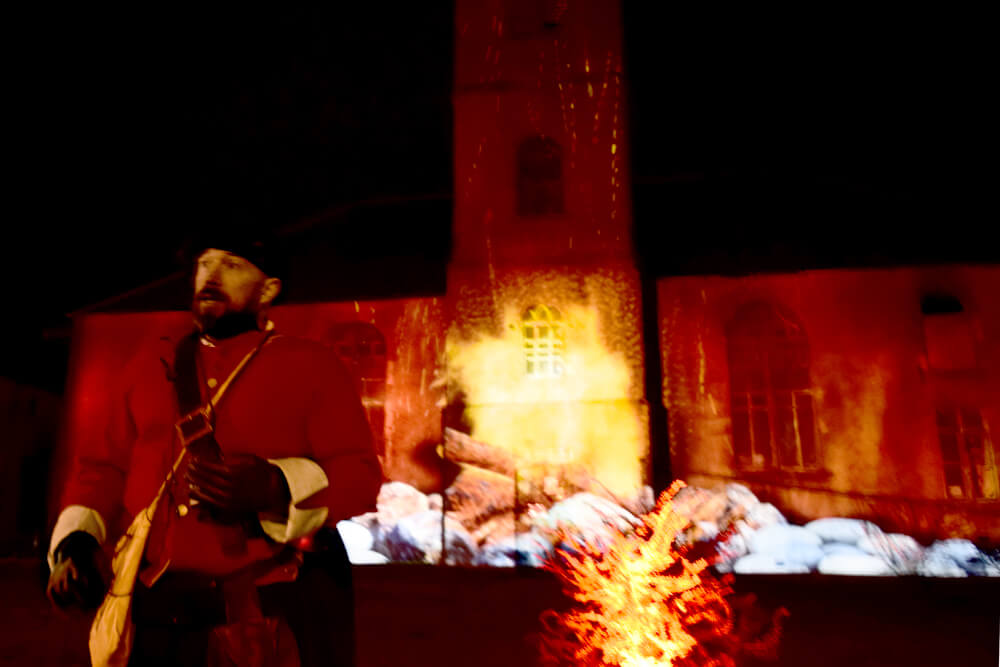
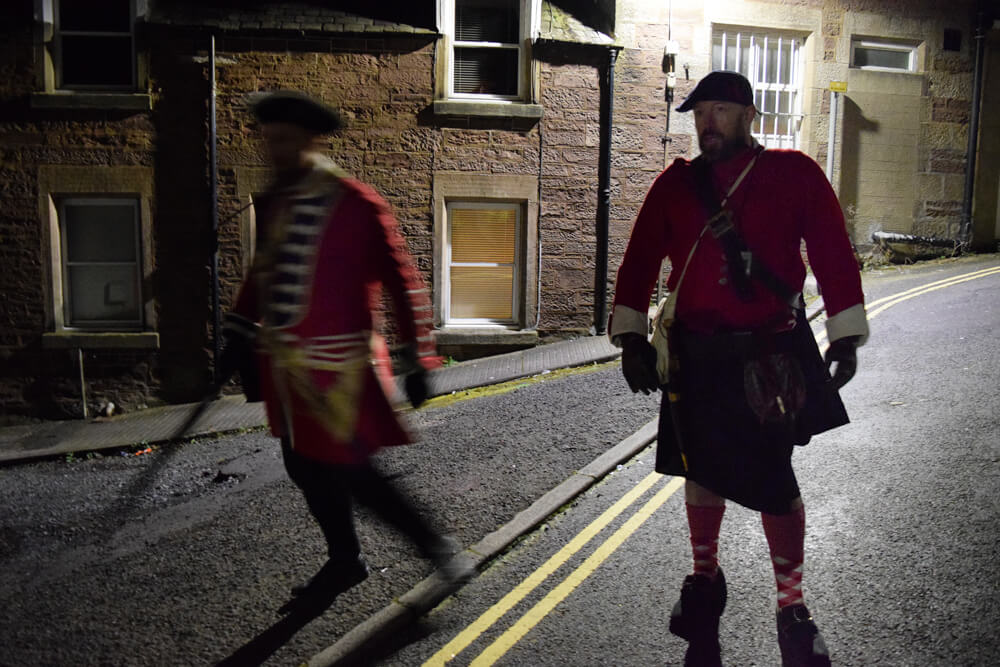
Heroes and Villains performance in Crieff town centre
“Arguments about prices, treachery and double-crossing were rife as poor and volatile men managed cattle herds worth hundreds of pounds.”
Rob Roy McGregor

Heroes and Villains performance in Crieff town centre.
Imagine the Cattle Coming
They were tough times for Crieff.
Hardy Highland drovers arrived en masse into the small town. Each brought hundreds of cattle, They converged in the hills and descended into Crieff, hoping to sell their animals for the best price at ‘Trysts’ (market meeting places).
Arguments about prices, treachery and double-crossing were rife as poor and volatile men managed cattle herds worth hundreds of pounds.
A Sinister Warning
Not Popular Visitors
Rebel Songs
When we meet him in this reenactment, he is angry and fearful.
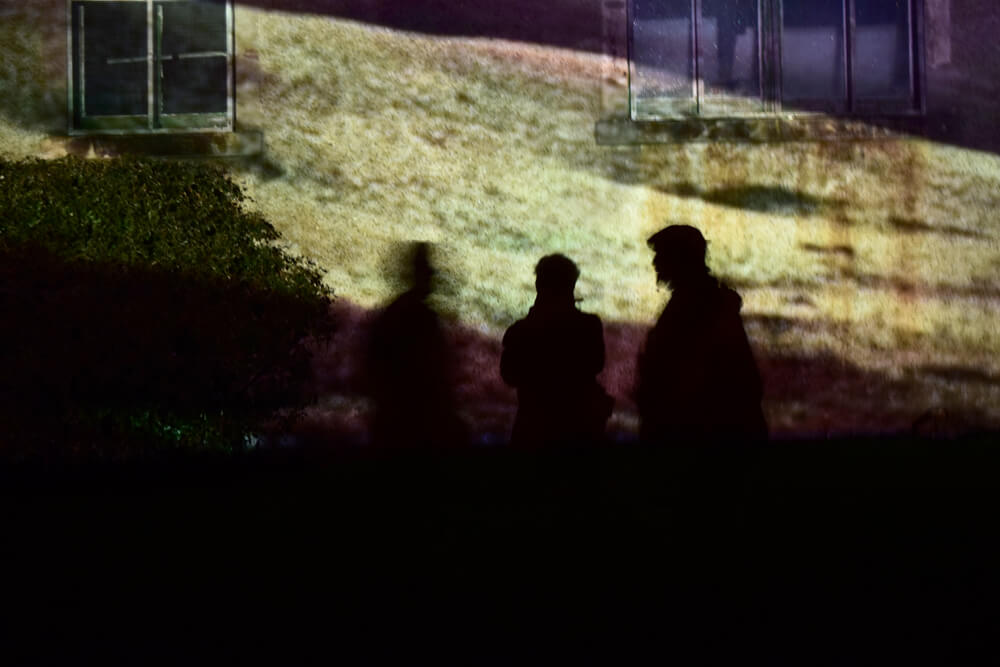
Heroes and Villains performance in Crieff town centre
Torch this place
“The above-named Rebells (with whom also Lodovick Drummond above designed was in company), who (as by the sequel of the story, you may readily conjecture, was privy to all their hellish plots) solemnly swore that they had no orders fur burning of Crieff; and, sayes Lodovick Drummond—yea, swore by all that’s sacred, were there any such thing in design he would certainly give premonition.”
Annals of Auchterarder, 1715-16
English Learners Under Attack
The Fire, Folklore, Heroes and Villains event is an expert street theatre historical production.
The actors were especially fantastic and knowledgeable and the tour is a wonderful way to experience the history of a familiar town.
Well done everyone involved. Thank also to the Crieff Co-Op staff for being stewards throughout those chilly evenings.
What a fantastic wee town we live in!
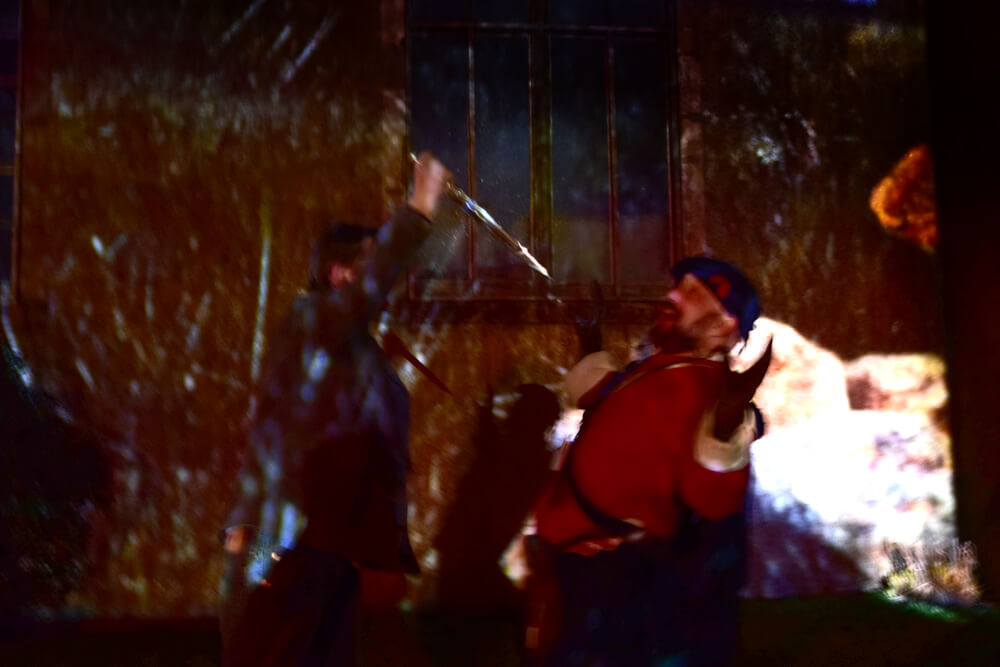
Blue Noun English Language School’s Kenny correcting English learners (only kidding).
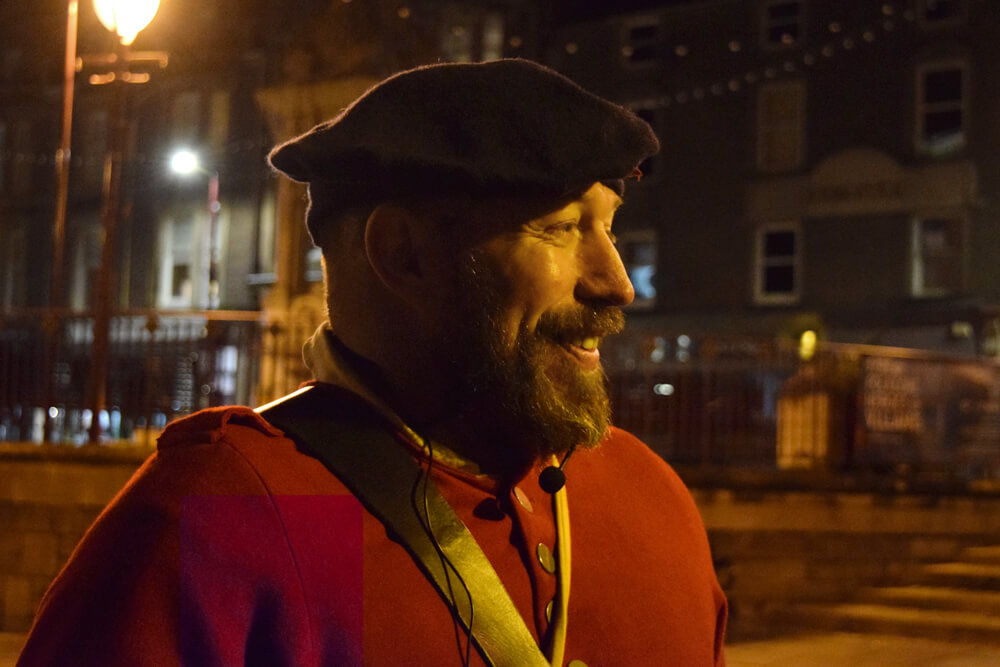
A Special Thank You
Our actor guide was amazing and answered all our English learners’ questions with deep knowledge.

